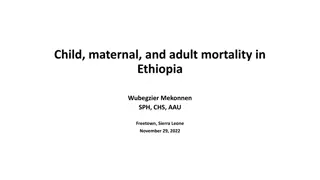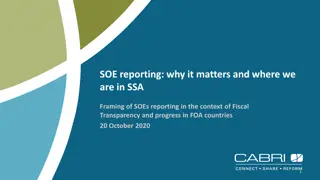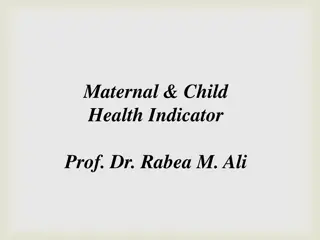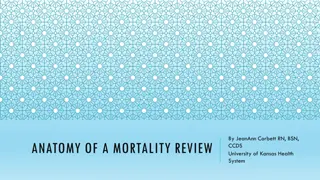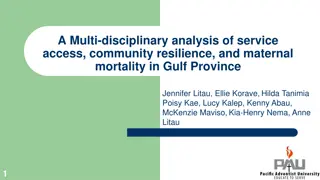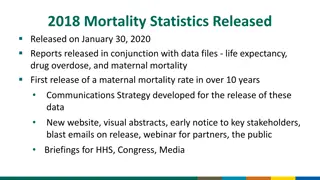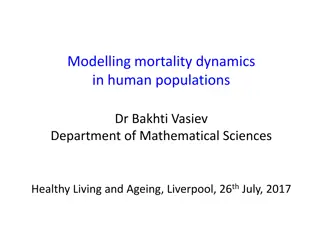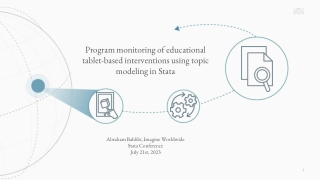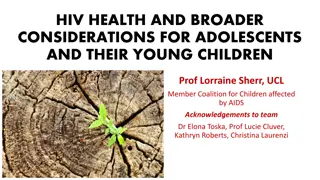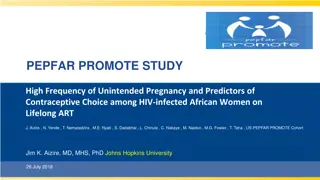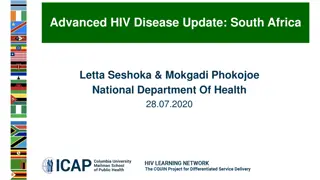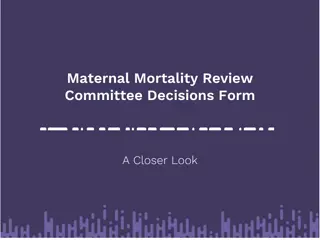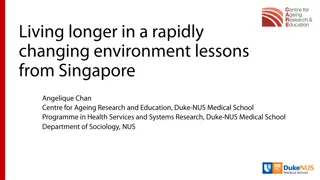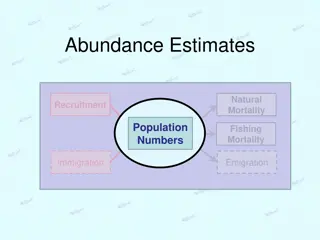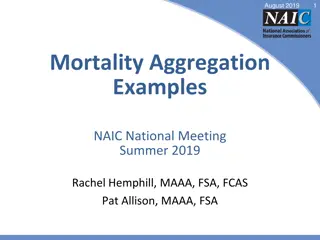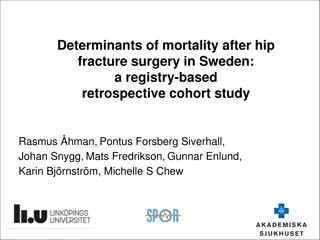Analyzing Adult Mortality Trends in Sub-Saharan Africa
Adult mortality trends in Sub-Saharan Africa have been historically underrepresented compared to child mortality. This presentation by Ayaga A. Bawah explores the levels and patterns of adult mortality using data from Health and Demographic Surveillance Systems (HDSS) sites in the region. The methodology involves interventions like randomized trials, verbal autopsies, and household characteristic evaluations. The findings reveal significant insights into the probability of dying between the ages of 15 and 60 over several decades.
Download Presentation

Please find below an Image/Link to download the presentation.
The content on the website is provided AS IS for your information and personal use only. It may not be sold, licensed, or shared on other websites without obtaining consent from the author. Download presentation by click this link. If you encounter any issues during the download, it is possible that the publisher has removed the file from their server.
E N D
Presentation Transcript
Levels and Trends of Adult Mortality in Sub- Saharan Africa Ayaga A. Bawah, PhD Regional Institute for Population Studies (RIPS) University of Ghana, Accra, Ghana Presentation prepared for Africa Mortality Symposium 30th November 2022
Outline Introduction Data and methods Results trends and patterns of adult mortality Discussion Conclusions
Introduction Adult mortality has not received much attention compared to child mortality Yet significant number of premature deaths among adults are reported Partly due to paucity of data on health and survival In the 1970s through much of the 80s methodological innovations were developed to indirectly estimate adult mortality using census and survey data Methods like Sibling History/Sisterhood, two census methods such as death distribution methods, among many were developed Questions were added to censuses and Demographic and Health Surveys (DHS) in various countries to capture data to estimate adult mortality But the reliability of these data has often been questioned
Data and Methods Data from selected Health and Demographic Surveillance Systems (HDSS) sites in Africa to show levels and trends of adult mortality HDSSs are community-based localized studies that collect data on populations and their attributes fertility, mortality, migrations and related household and individual characteristics over time Some of these sites have operated for a very long time and thus have data to study long-terms trends
Methodological Approach of HDSS Intervention trials (randomised) Capturing episodes of disease and hospital admission Verbal autopsy for cause of death Measure characteristics of environment or household members (e.g. SES, vaccines, HIV, nutrition)
Adult Mortality: Probability of Dying between 15 and 60 Years of Age 600 500 400 45q15 300 200 100 0 1950 1960 1970 1980 1990 Year 2000 2010 2020 2030
Results I present results using both HDSS and DHS data for selected settings/countries
Trends in Adult Mortality rates per 1,000 person years for Adults 15 + years, Navrongo HDSS: 1996-2019 22 Mortality per 1000 person years 20 18.8 18 17.5 16.4 16.5 16 14 13.3 12 10.5 10 8 2016 1996 1997 1998 1999 2000 2001 2002 2003 2004 2005 2006 2007 Year 2008 2009 2010 2011 2012 2013 2014 2015 2017 2018 2019 ALL Males Females
Trends Maternal Mortality at Ifakara Rural/Urban HDSS and Rufiji HDSS Site, Tanzania 400 350 300 Adult mortality rates 250 200 150 100 50 0 2000 2003 2006 2009 2012 2015 RHDSS IUHDSS IRHDSS Source: Data from Ifakara and Rufiji HDSS, Tanzania
Adult mortality rates by place of residence Kersa HDSS 2008 2013 Source: Ashenafi et al. 2017. Population Health Metrics
Monthly Mortality Rates for Adults 15 + from Kilifi HDSS, Rural Coastal Kenya Source:Otiende et al. 2021. Wellcome Open Research
Trends in Adult Mortality Rates by Sex, Rural South Africa, Agincourt HDSS 1993-2013 Source: Kabudula et al. 2017. BMC Public Health
Female Probabilities of Dying between Exact Age 15 and 50 (35q15)
Male Probabilities of Dying between Exact Age 15 and 50 (35q15)
Discussion Data from the HDSS show that adult mortality has been declining Nevertheless, adult mortality remains high Results from Agincourt HDSS site in rural South Africa showed the impact of HIV on adult mortality Similarly, DHS data showed that while adult mortality is declining, it still remains high HDSS data provide opportunities for monitoring progress of interventions at the local/community level Further research is needed to get more understanding of adult mortality in SSA
Conclusions Adult mortality rates, as reflected in both general adult mortality figures, as well as the maternal mortality rates, remain high but on the decline However, levels vary across HDSS sites and sub-regions Data still scarce on adult mortality in SSA so there is need to invest in generating evidence on trends and patterns in adult mortality
Thank you for your attention Email: aabawah@ug.edu.gh



